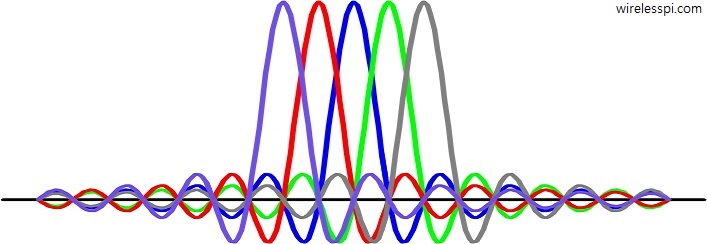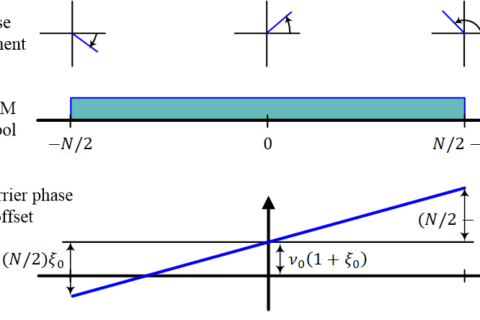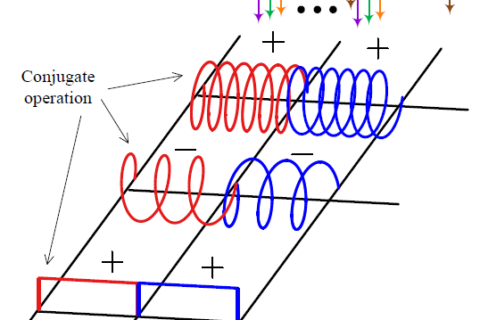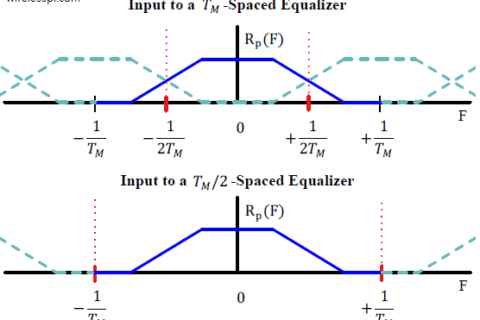Orthogonal Frequency Division Multiplexing (OFDM) is a technique of choice for many high rate wireless communication systems. An overview of OFDM for a DSP/wireless beginner was given in this article where visualizations of how OFDM slices the spectrum into multiple subcarriers for one user was provided in detail.
Orthogonal Frequency Division Multiple Access (OFDMA) is an extension of OFDM for multiple users, i.e., it is a multiple access technology (like TDMA and CDMA from 2G and 3G cellular systems, respectively) in which the available spectrum is divided into multiple subcarriers that are shared among multiple users. This was the choice of multiple access technology in 4G LTE systems.
After the adoption of OFDM in 5G NR, it has become even more relevant for wireless engineers to understand its significance in the big picture of wireless communication systems. Therefore, I want to list the main advantages and disadvantages of OFDM/OFDMA in one place.
Advantages
Some of the main advantages of OFDM/OFDMA are as follows.
- Simple Equalization: OFDM bypasses the need for a long equalizer as in single-carrier systems and requires a computational load of only 1 division operation per subcarrier as the equalization part. This turns out to be a huge savings in complexity for high rate wireless communication systems in which the symbol time is short resulting in long channel response.
- Hardware Implementation: In an OFDM system, modulation at transmit side is performed through an inverse Fast Fourier Transform (iFFT) block and the demodulation at receive side is done through a Fast Fourier Transform (FFT) block, both of which are hardware optimized leading to simpler implementations.
- Intercell Interference: Orthogonality among the subcarriers not only helps in preventing Inter-Symbol Interference (ISI) from multiple copies of the same signal but also helps in avoiding interference among transmissions from neighbouring cells.
- Integration with MIMO: Since 1995, Multiple Input Multiple Output (MIMO) systems have become an integral part of infrastructure based wireless systems. When multiple antennas transmit or receive signals, there is interference among their transmissions as well known as inter-antenna interference. Like multiple copies of the same signal, OFDM helps in equalizing the effect of this interference among antennas through the same equalization strategy.
- Flexibility: This is perhaps the biggest advantage offered by OFDM. Having a sliced spectrum allows the designer to control different parts of the spectrum in an adaptive manner. For example, a higher-order modulation can be sent for good subcarriers and a lower-order modulation for bad subcarriers. Moreover, users can be scheduled on different subcarriers in OFDMA in an adaptive manner according to the quality of service on offer. Most importantly, it can be easily integrated with adaptive modulation and coding strategies.
Let us now turn towards the main disadvantages of OFDM.
Disadvantages
Some of the challenges faced by an OFDM system in a real network are as follows.
- Out of Band (OOB) Transmissions: As we saw in the beginner’s guide, rectangular pulses are used in time domain when the modulation symbols are mapped on orthogonal subcarriers. Since a rectangular signal has a sinc-shaped spectrum, the long tails of the sinc signal generates excess Out of Band (OOB) levels. This is a major problem in carrier aggregation scenario where multiple fragments of the spectrum are assigned to the same user.
One option to overcome this problem is through leaving room for decay along the edges of the available spectrum through null subcarriers. This results in loss of spectral efficiency as the subcarriers along both ends of the spectrum remain unmodulated.
Another option is to filter the OFDM signal that is known as filtered OFDM. This also results in loss of spectral efficiency because filtering operation also causes time dispersion due to the group delay. To overcome this problem, a longer Cyclic Prefix (CP) is required that comes at a cost of reduced data rate. A window can also applied to an OFDM signal in time domain as explained here.
- Synchronization: OFDM relies on tight synchronization at the receiver side. While the impact of timing synchronization is relatively straightforward, carrier frequency synchronization is not an easy task, particularly in systems where a wide range of services and hence data rates are offered. This also becomes a problem in multiple terminals coordinating their transmissions in a cellular scenario.
- Peak-to-Average-Power Ratio (PAPR): Signal generation in OFDM is done through an iFFT which combines subcarriers (i.e., complex sinusoids of different frequencies) through scaling factors (i.e., modulation symbols) in a linear fashion. This results in large signal swings at the output and the Peak-to-Average Power Ratio (PAPR) is increased. When this signal passes through a power amplifier at the transmit side, the non-linearity of this amplifier leads to inband distortion thus increasing the Bit Error Rate (BER). This is also responsible for out of band emissions thus causing interference among neighbouring channels.
References
[1] Signal Processing for 5G: Algorithms and Implementations, Editor(s):Fa-Long Luo Ph.D., Charlie (Jianzhong) Zhang Ph.D., John Wiley & Sons, 2016.



